Whyte T-130C Works - Review
Whyte Bicycles is a British brand, founded by its namesake, Jon Whyte, who has been on the vanguard of the mountain bike suspension movement nearly from day one. Whyte was a proponent of the now ubiquitous dual-link swingarm pivot when few understood its potential, but for the Trail-130C Works in this feature, Whyte revisits the simpler Horst Link four-bar arrangement. Whyte has grown to the point where it can sustain North American distribution, so for the first time, the brand is readily available in the US.
Priced at $5999 USD, the T-130C Works is the top-drawer model of Whyte's 2016 trail bike range, which includes two aluminum-framed options and two carbon options that begin at $2999 USD. The T-130C, with its carbon chassis, progressive geometry, and impeccably spec'd component selection, is poised to impress top bike-handlers who may be searching for a more playful and pedal-efficient alternative to the long-travel AM/enduro machines that have dominated the marketplace and media in recent years.
Details:
• Purpose: Technical trail riding
• Frame: Carbon front section/aluminum rear section, 27.5" wheels, Boost rear hub spacing, 130mm travel Horst-Link four-bar suspension, threaded bottom bracket, internal cable routing, downtube bottle mount
• Suspension: Fox Float Factory 34 Kashima fork, Float DPS Factory EVOL Kashima shock
• Drivetrain: Shimano XT 11-speed, Face Face Next crankset 32t.
• Brakes: Shimano XT, 180mm-F, 160mm-R rotors
• Wheels: Whyte Trail 30 - 30mm ID carbon rims, Whyte hubs, DT Swiss Comp Race spokes
• Sizes: Small, medium (tested), large and X-large
• Weight: 28 pounds/12.75kg
• MSRP as tested: $5999 USD
• Contact: Whyte USA, Whyte UK, @whytebikesUSA
About the T-130 Works
Frame:The 130C Works is one of the tamer looking designs that has come from the Whyte think tank, but that does not mean ordinary. Its numbers are modern enough to provide inspirational technical handling without bending to the exaggerated front center, super-steep seat tube angle, ground-hugging bottom bracket and DH head angles that the sport's illuminati are calling for. Its well-crafted 130-millimeter-travel chassis is carbon up front, with a welded-aluminum rear suspension - and coming from one of the sport's muckiest riding destinations, the T-130C chassis has been tightly sealed against the elements where the cables and housings enter the frame. There is also a molded-rubber ring encircling the seatpost and an internal seat binder arrangement to prevent muck and moisture from entering the frame's seat tube. Also in the British tradition, the bottom bracket is threaded, and there is a single bottle mount on the downtube.
One-By for life: Shamelessly, Whyte makes no provision for a front derailleur and puts the hollow space that most frame designers still reserve for Shimano's mechanical dinosaur to better use by widening the frame, the swingarm pivots, and eliminating the ugly dog-leg on the right chainstay. That's correct - Whyte swingarms have symmetrical chainstays - and ample tire clearance, and correct chain lines, and the chassis is laterally stiffer because of it.
Great build: Shimano, however, is not an enemy of Whyte Bicycles. In fact, the 2016 T-130 Works we test here bucks the SRAM trend, with a Deore XT 11-speed transmission, powered by a Race Face Next crankset - and it also sports XT brakes with the neoclassic, 180/160-millimeter rotor combination. Suspension is all Fox, with a 130-millimeter-stroke Float Factory 34 fork, paired to a Float Factory DPS EVOL shock (both Kashima coated), while the T-130C's dropper post was a 125-millimeter-stroke RockShox Reverb Stealth.
| |||||||||||||||||||||||||||||||||||||||||||||||||||||||||||||||||||||||||||||||||
Cockpit appointments read like a shopping list of just-right items for a trail bike intended to span the gap between rad and rideable. The 760-millimeter Race Face carbon SIXC handlebar is an ample width, sporting comfortable Whyte-branded lock-on grips and a branded 50-millimeter aluminum stem. All the components are tastefully color-matched from tip to tail. If you like orange, you will love this bike.
Sensible numbers: Start with a 66.5 degree head angle, which is slack enough to ease you down gnarly drops. Add short, 16.5-inch chainstays to ensure that your rear tire will be clawing for traction up technical climbs, and then set the bottom bracket at 13 inches - low enough to place the crank center almost an inch below the axles, yet high enough to keep the pedals from banging off rocks. To this point, the T-130C's numbers are up-to-the moment, but Whyte breaks from the current rider-forward fad with a step back to a more conventional 73.5-degree seat tube angle. I assume their reasoning was to provide a more efficient seated pedaling position for prolonged climbs. (More about that later.) The anticipated sum of all those values is a bike with a wider variety of tools available to its rider than either a dedicated XC trailbike, or a full-fledged enduro racer could provide.
With the first roll-out, the Whyte impressed me with how planted it feels. Its steering feels deliberate - the front wheel will track the smallest movement of the handlebar and the rear wheel tends to grip rather than slide around. I learned quickly to choose a line and point the bike exactly where I wanted to go, and to avoid the temptation to continually adjust the bike's trajectory to avoid minor obstacles. Commit and Whyte's mid-travel trail bike will hold its line over a surprising array of bumps, rocks and uncertain surfaces. Ride with uncertainty and the T-130 will wander. The steering is not overly quick. In fact, the T-130 feels remarkably stable in any technical situation, but it rewards precision.
Setting up the suspension is easy. Like many Horst-Link designs, it can be configured hard or soft and still manage to deliver a balanced ride. Sag settings close to 25-percent on the fork and shock did the trick (the T-130 has 130 millimeters of wheel travel on both ends), and I found that the bike was happier with slightly faster low-speed rebound values than I usually prefer. The suspension feels firm in the mid-stroke, so it pedals well without damping aids, and it maintains its ride height well under braking. Conversely, with so much support in the mid-stroke, the Whyte lets its rider know what's going on beneath the wheels, but a rougher ride is a compromise one must be willing to accept to enjoy the livelier, more responsive feel that a technically adept chassis with minimal suspension travel can deliver.
 | The steering is not overly quick ...but it rewards precision. |
Seat angles and climbing: Steep seat tube angles may be the rage at the moment, but the Whyte T-130's not-so-modern seat-tube angle reminded me that there were valid reasons why seat tubes hovered around 73 degrees for nearly a hundred years. Setting bike-fit ergonomics aside for the moment, seat tube angles around 73 degrees set the rider behind the crank circle, just enough so that when the rider pushes hard on the pedals, much of that pressure is countered by the saddle. This takes a huge load off of the rider's upper body - muscles that would normally have to counter those pedaling thrusts.
The rider's weight plays a significant role in countering pedaling forces, but when a rider climbs or accelerates strongly, pedaling thrusts quickly overcome the rider's weight. As seat tube angles pass 74 degrees, the rider's seated location over the cranks begins to emulate a standing, out-of-the-saddle position. Very little pedaling force is directed into the saddle and almost all pedaling effort that exceeds the rider's weight must be counteracted by the rider's arms and torso. That can be a significant energy waster on a long trail ride.
 | The Whyte T-130's not-so-modern seat-tube angle reminded me that there were valid reasons why seat tubes hovered around 73 degrees for nearly a hundred years. |
The advantage of seat tube angles beyond 74 degrees comes into play when climbing very steep pitches. In those situations, the exaggerated angle compensates for the steepness of the terrain by shifting weight forward and placing the rider in a similar position over the crank-circle as a 73-degree angle would when climbing more moderate grades. Where I do most of my riding, climbs are steady and peppered with technical challenges, so I prefer a 74-degree seat tube angle, which is a good compromise between long-ride pedaling efficiency and a good technical climbing position. The Whyte R-130's cockpit ergonomics were a similar compromise between the emerging "rider-forward" geometry and the more moderate numbers of a good XC/trailbike. The front tire stayed in contact with the earth, I never worried about traction while I was scratching up technical climbs, and I could settle into a comfortable pace for long ascents.
Handling: I could trust the T-130 to get me down almost any technical descent. With Maxxis High Roller II tires mounted to Whyte's house-brand 30-millimeter-width carbon rims, I could find sufficient braking and turning traction to keep the rubber side down on almost any surface (Note: not-so grippy Maxxis Ardent 2.25" tires are listed in the specs). Cornering the Whyte took some getting used to, because the weight balance between its wheels is such that both tires tend to break traction at the same moment. Overcook a corner and instead of a typical rear-wheel drift, both tires will slide until they can find something to hang onto again. It's a much faster way to turn corners, but it feels less secure than dragging your rear tire around does. Another up-side of the Whyte's edgy turning style is that you can set up for any kind of corner the same way - establish a lean and it will find its way around. It carves a tight arc and, as mentioned, it can be steered with remarkable accuracy should you need to alter your line.
As delivered, the T-130's Fox suspension was tuned exactly how I set my bikes up for Southern California: Soft enough in the first part of its travel to help the tires find grip on loose, gravelly soil, and firm in the mid-stroke to keep the fork and shock from blowing through their travel when braking hard, or when dropping down boulders and rocky chutes.
Typically, a 120 to 130-millimeter chassis will feel choppy at speed when it runs out of wheel travel, and the evidence that leaves behind is sealing fluid seeping from pinholes in the tires where they bottomed repeatedly against nasty things. Not so with the T-130. The Whyte felt quite smooth at speed, and rarely lost its composure when it was in over its head with speed and terrain. I was especially impressed by how stable the Fox 34 fork felt. I attribute some of the T-130's ride quality to its capable suspension, and as much to the bike's long and low stance. Even when I was leaning well off the front or rear, it always felt like I was within the "safety zone" of the chassis.
Technical report:
As advertised, the Whyte T-130's carbon chassis is truly next-gen: Light weight and spirited in the pedaling department, with a generously long cockpit and gravity inspired geometry, it rolls silently, and its component selection leaves little to desired - at a very attractive MSRP.
Spoiler alert: Its replacement, the 2017 T-130 Works, has recently been announced, and will feature the same chassis, but equipped with a full SRAM ensemble, including Eagle 12-speed and RockShox suspension. Priced at $6,499 USD, however, it is also a bit more expensive. Choose the 2016 or 2017 model, either way, you are sure to get a great trailbike. Here is how the 2016 model's components stacked up:
Internal seatpost clamp: Good idea on paper, with a rubber seal up top and no seat tube slot to attract water and muck, an internal clamp makes sense for any mountain bike. The bad news is that the clamp's internal wedges puts localized pressure on the RockShox dropper seatpost and binds the mechanism. Back the pressure off and the post can slide into the frame over time. I found a happy medium, but it was a bother.
Whyte Carbon Tubeless wheels: Good feeling wheelset. Not overly stiff and the spoke tension held up for an extended review period. The 30-millimeter inside width turned the Maxxis High Roller II tread profiles into cornering and climbing carnivores. The quick engagement freehub was an added bonus.
Internal cable plugs: Bit of a nitpick here, but one of the bike's selling points was that its chassis was well sealed. The rubber plugs intended to protect the cable and hose entries fell out repeatedly until I rammed them into place with a seal pick and some glue. The culprit seemed to be that the grooves in the plugs are narrower than the thickness of the frame.
As advertised, the Whyte T-130's carbon chassis is truly next-gen: Light weight and spirited in the pedaling department, with a generously long cockpit and gravity inspired geometry, it rolls silently, and its component selection leaves little to desired - at a very attractive MSRP.
Spoiler alert: Its replacement, the 2017 T-130 Works, has recently been announced, and will feature the same chassis, but equipped with a full SRAM ensemble, including Eagle 12-speed and RockShox suspension. Priced at $6,499 USD, however, it is also a bit more expensive. Choose the 2016 or 2017 model, either way, you are sure to get a great trailbike. Here is how the 2016 model's components stacked up:
Internal seatpost clamp: Good idea on paper, with a rubber seal up top and no seat tube slot to attract water and muck, an internal clamp makes sense for any mountain bike. The bad news is that the clamp's internal wedges puts localized pressure on the RockShox dropper seatpost and binds the mechanism. Back the pressure off and the post can slide into the frame over time. I found a happy medium, but it was a bother.
Whyte Carbon Tubeless wheels: Good feeling wheelset. Not overly stiff and the spoke tension held up for an extended review period. The 30-millimeter inside width turned the Maxxis High Roller II tread profiles into cornering and climbing carnivores. The quick engagement freehub was an added bonus.
Internal cable plugs: Bit of a nitpick here, but one of the bike's selling points was that its chassis was well sealed. The rubber plugs intended to protect the cable and hose entries fell out repeatedly until I rammed them into place with a seal pick and some glue. The culprit seemed to be that the grooves in the plugs are narrower than the thickness of the frame.
Pinkbike's Take:
 | I'd recommend the T-130 Works to riders searching for a particularly versatile trailbike. It climbs easily, and does not ask much from its pilot at the controls. It is built tough enough to go the distance, it has an excellent suspension system, and it is brave enough to demonstrate how deep you can go into the abyss with only 130 millimeters of suspension travel. Whyte sent me the T-130 while I was reviewing a handful of other makes, ranging from enduro monsters to lightweight XC trailbikes. More often than not, it was the Whyte that I reached for when I had the choice. - RC |
Author Info:
Must Read This Week
Sign Up for the Pinkbike Newsletter - All the Biggest, Most Interesting Stories in your Inbox
PB Newsletter Signup
-
About Us
Contacts FAQ Terms of Use Privacy Policy Sign Up! Sitemap -
Advertise
Advertising -
Cool Features
Submit a Story Product Photos Videos Privacy Request -
RSS
Pinkbike RSS Pinkbike Twitter Pinkbike Facebook Pinkbike Youtube Pinkbike Instagram
Newsletter Signup
Copyright © 2000 - 2024. Pinkbike.com. All rights reserved.
dv65 0.047510
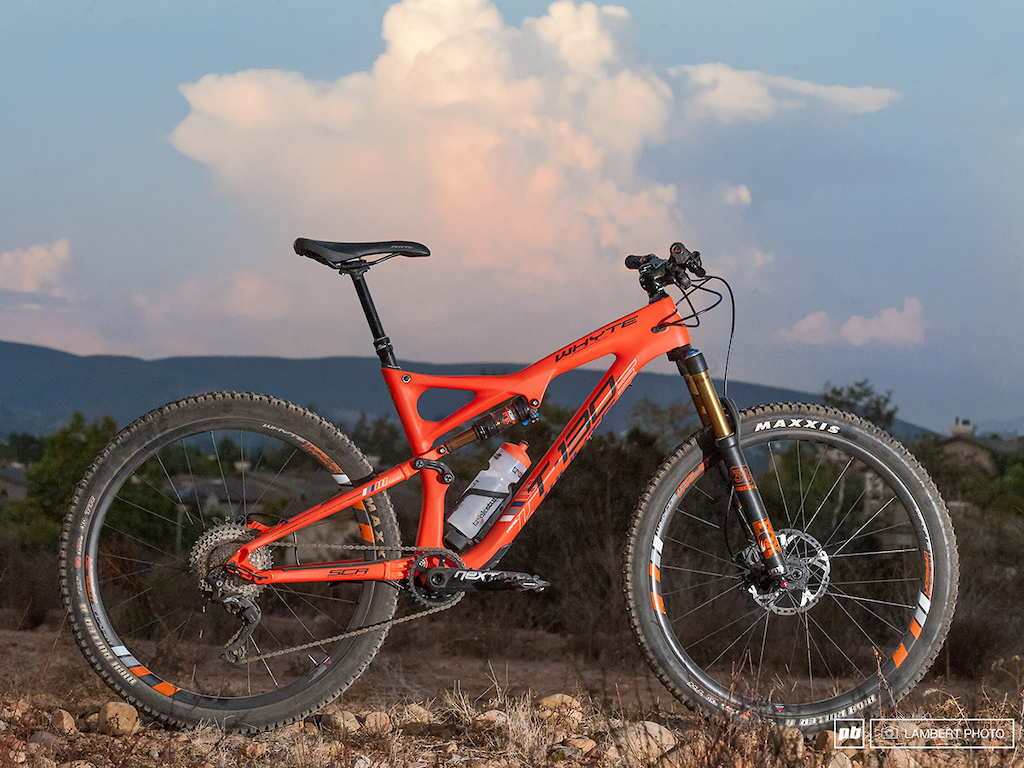
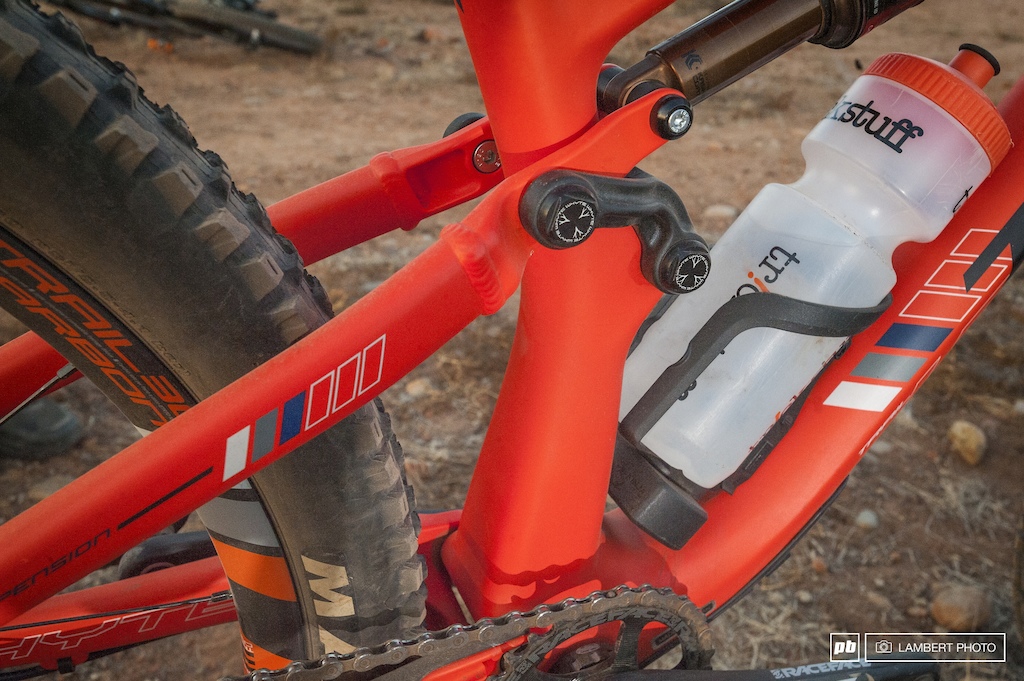


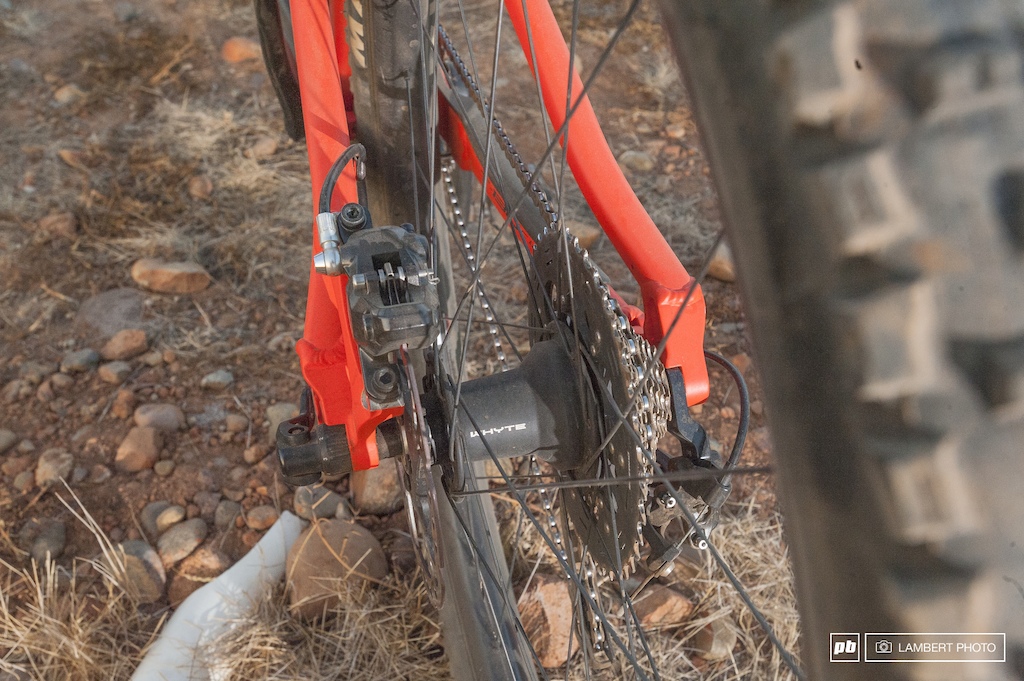

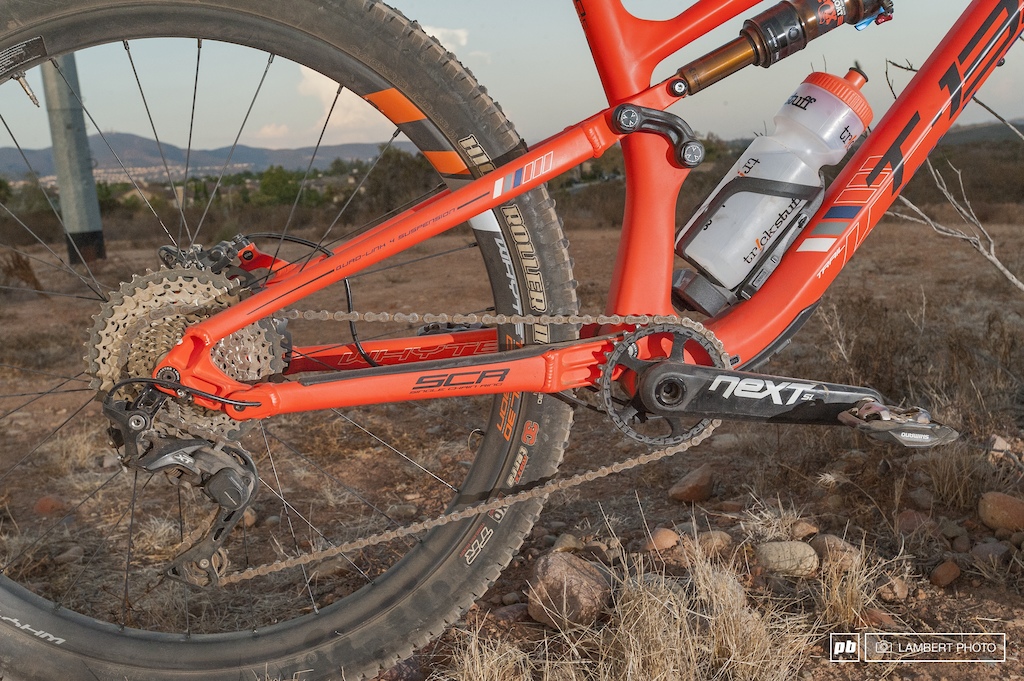








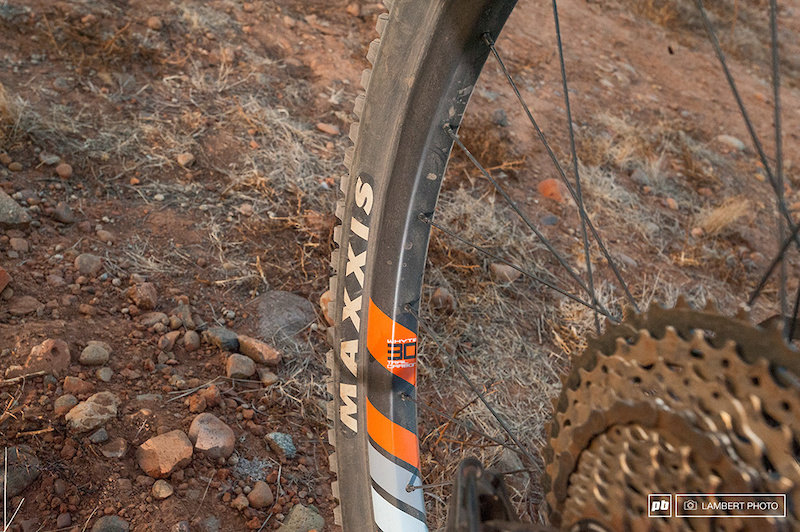
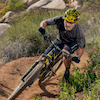
 Member since Mar 23, 2011
Member since Mar 23, 2011
Not found! wtf
"It climbs easily... and it is brave enough to demonstrate how deep you can go into the abyss with only 130 mm of suspension travel."
Nah - let's talk new acronyms and proprietary parts which make no discernible different in ride quality.
@tehllama i am definitely a proponent of building rear ends to suit each size, but manufacturers know that would cost $$ much easier to say a chainstay length of 420 is perfect if you're 5' or 6'5. In this regard, liteville is on the money!
as RC mentions, just comes down to the steepness of your climbs. I'm sure on fire roads in california a slack seat angle is great, however climbing steep alpine singletrack with 425 chainstays there's just no way to keep the front wheel on the ground
also for the record norco increases chainstay length with larger sizes
I don't get it...if you go to the trouble of making a mould for each size, why not just get each one right?
For those that don't want the fancy carbon front and want to save a few bucks, the AL version is a steal for $3800.
I agree with the comments about the top tube cable seals. They're shite and I find them hanging out at the end of a lot of rides. It could also use a longer dropper on the L and XL if you're going to really push the envelope on it. I've found 6.5nm on the seat clamp holds it without pinching the dropper. I also suffer from some heal rub, don't really notice it but missing a bunch of paint of the stays. I have biggish feet and ride a bit heels in though.
I'd definitely recommend it to anyone after a properly tidy trail bike that can get rad alongside way bigger bikes and do an XC epic through the local woods the next day.
Seems strange to have a dialed portfolio that includes the T130, T160, and T129 without trying to put together a long-legged 29er that mirrors the same geometry and suspension approach. Strange isn't really the right word - missed opportunity at awesomeness.
Honestly if they'd just do a carbon T129 with a 130mm fork and Eagle I'd be interested.
Speaking of correct chain lines, does this bike's 1x Shimano XT drivetrain drop the chain off the largest cassette sprocket to the next smaller one if the cranks are rotated backwards...even just a little bit? Some bikes i've ridden have that annoying habit.
1) Demo ride of the Yari model and it put me in a tree because I was going too fast - that's the bike for me!
2) Bought the CRS and it's doing its damnedest to stick me in another tree - pheckin love this bike, it's scarily fast!
3) The geomerty has the right compromises for me; climbs very slightly compromised to the benefit of the singletrack and decents of all types - this thing is so stable at speed and batters through anything - who needs a 160mm enduro bike?
4) Also having minor problems with the internal cable seals but I'm sure my LBS will sort this, I can live with that
5) Would have been happy with an 11-speed setup, the 12-speed Eagle is fine but that's one big cassette in terms of size and replacement price oh and no PowerLock's available yet so dreading a chain snap!
6) Doesn't look like a Session and I personally think it's a good looking bike!
Summary: one very happy Whyte T-130 CRS owner!
The suspension just broke-in on my T130. It handles almost everything as well as the G160 does. Not quite as able on the downs as the G160, but everywhere else it's as good, or better. Since I've started doing more endurance rides, the lower weight really helps.
I had an issue with the SP slipping as well. I put some carbon paste on it, and tightened it to 6nm. It stays put now. I blew up the Ardent Race on the rear, on the second ride. Put an Ikon on instead. Best rear tire for this type of bike. Fast rolling, big volume, and it's a Maxxis.
I have about 600 miles on the T130. I'm 6'4" and 200lbs and the XL fits great. Swapped the chainring for an oval. If you can only have one bike, it's really the perfect bike in my opinion.
I thought everything had been said about the reverb until I read you can stop it operating by slightly over tightening a seat clamp!
"Also in the British tradition, the bottom bracket is threaded"
"Bottom Bracket: Race Face press fit 92mm "
So?
www.pinkbike.com/news/topeak-ninja-tc-road-bottle-cage-review-2016.html
#Blackbikesmatter